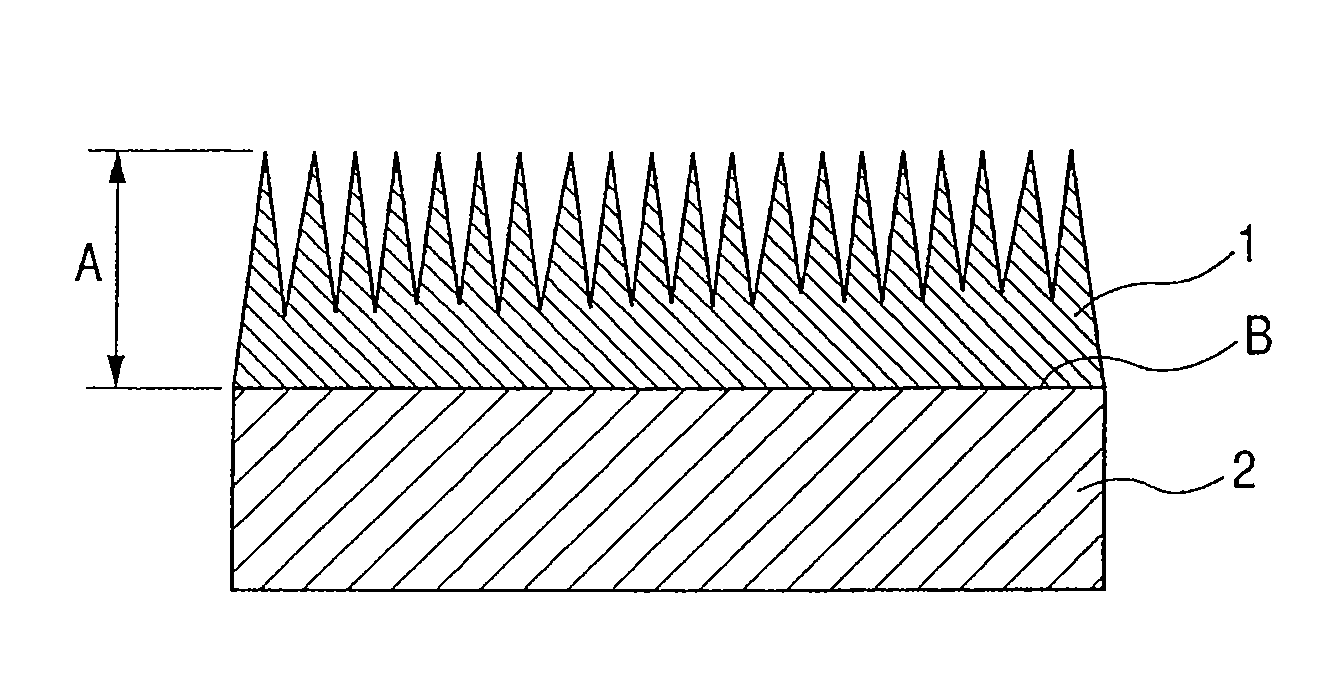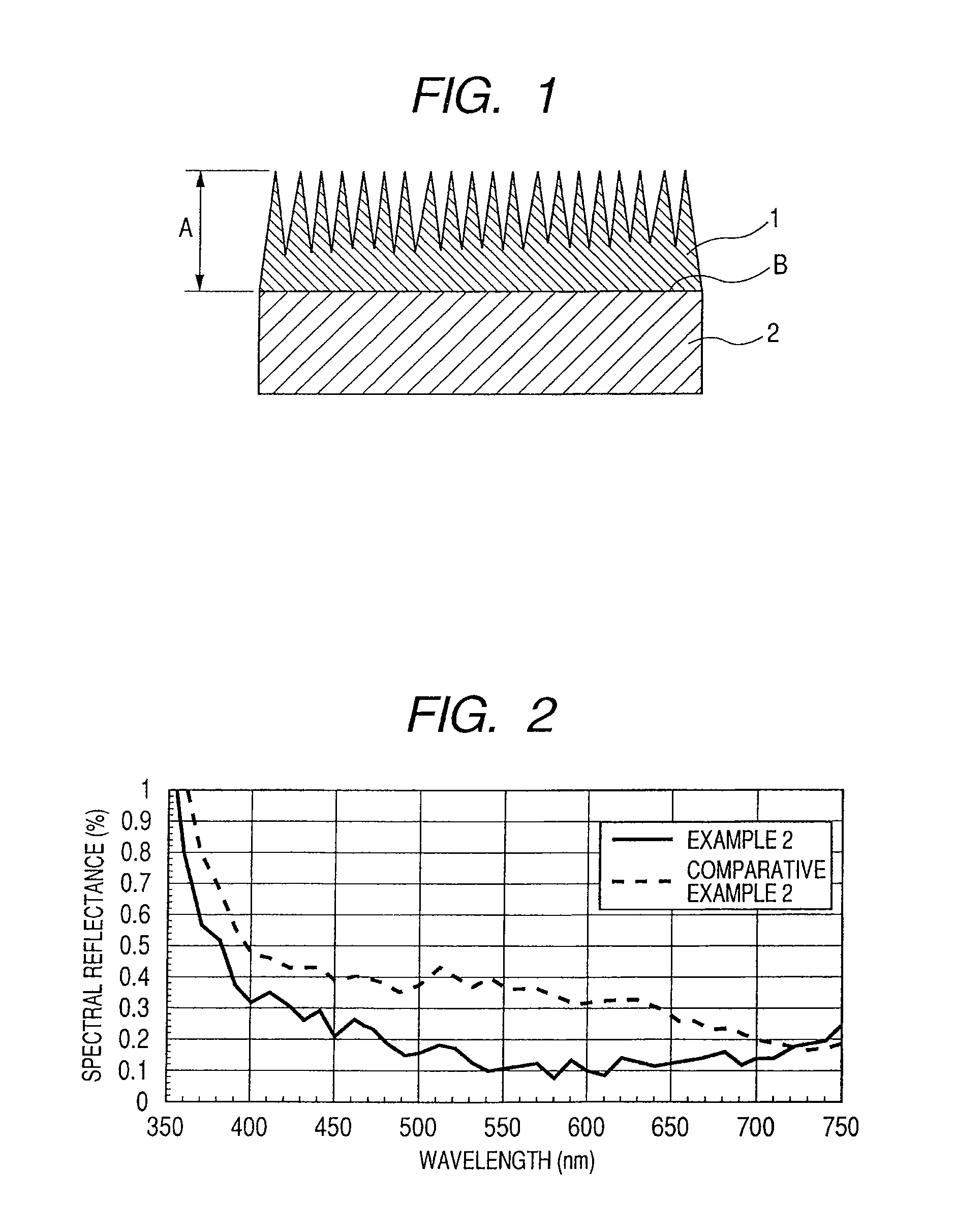Method of manufacturing optical element, and optical element
a manufacturing method and technology of optical elements, applied in the field of manufacturing optical elements and optical elements, can solve the problems of unendurable film formation on a base material such as a resin base material, adversely affecting the surface precision of optical substrates, and the inability to anticipate reflection reduction, etc., to achieve good reflection prevention characteristics
- Summary
- Abstract
- Description
- Claims
- Application Information
AI Technical Summary
Benefits of technology
Problems solved by technology
Method used
Image
Examples
example 1
[0074]A quartz substrate of 26 mm×76 mm in size and 1 mm in thickness was washed with a neutral detergent and then with pure water in order, and dried to prepare a glass substrate for coating.
[0075]23 parts by mass of aluminum sec-butoxide (Al(O-sec-Bu)3) was dissolved in 114 parts by mass of 2-propanol (IPA), and 12 parts by mass of ethyl acetoacetate (EAcAc) as a stabilizer was added to the solution, and stirred for about 3 hours at room temperature to prepare an Al2O3 sol solution as a coating liquid. The molar ratio of the solution was set at Al(O-sec-Bu)3:IPA:EAcAc=1:20:1.
[0076]Then, the glass substrate for coating (refractive index ne=1.524) was immersed in the coating liquid, and thereafter, a coating film was formed on the glass substrate surface by a dipping method (pull-up speed of 2 mm / sec, 20° C., 56% R.H.).
[0077]The coated glass substrate was preliminarily dried at 300° C. for 10 minutes, then immersed in distilled water of 30° C. for 10 minutes to remove the stabilizer...
example 2
[0080]A quartz substrate having a reflection preventing film was fabricated and measured as in Example 1, except that the preliminary drying was carried out at 200° C. for 10 minutes and the heat treatment after the removal of the stabilizer was carried out at 200° C. for 2 hours. The results obtained are shown in Tables 1 and 2.
example 3
[0081]A quartz substrate having a reflection preventing film was fabricated and measured as in Example 1, except that the preliminary drying was carried out at 100° C. for 30 minutes and the heat treatment after the removal of the stabilizer was carried out at 100° C. for 3 hours. The results obtained are shown in Tables 1 and 2.
PUM
| Property | Measurement | Unit |
|---|---|---|
| transparency | aaaaa | aaaaa |
| wavelength | aaaaa | aaaaa |
| temperature | aaaaa | aaaaa |
Abstract
Description
Claims
Application Information
 Login to View More
Login to View More - R&D
- Intellectual Property
- Life Sciences
- Materials
- Tech Scout
- Unparalleled Data Quality
- Higher Quality Content
- 60% Fewer Hallucinations
Browse by: Latest US Patents, China's latest patents, Technical Efficacy Thesaurus, Application Domain, Technology Topic, Popular Technical Reports.
© 2025 PatSnap. All rights reserved.Legal|Privacy policy|Modern Slavery Act Transparency Statement|Sitemap|About US| Contact US: help@patsnap.com



